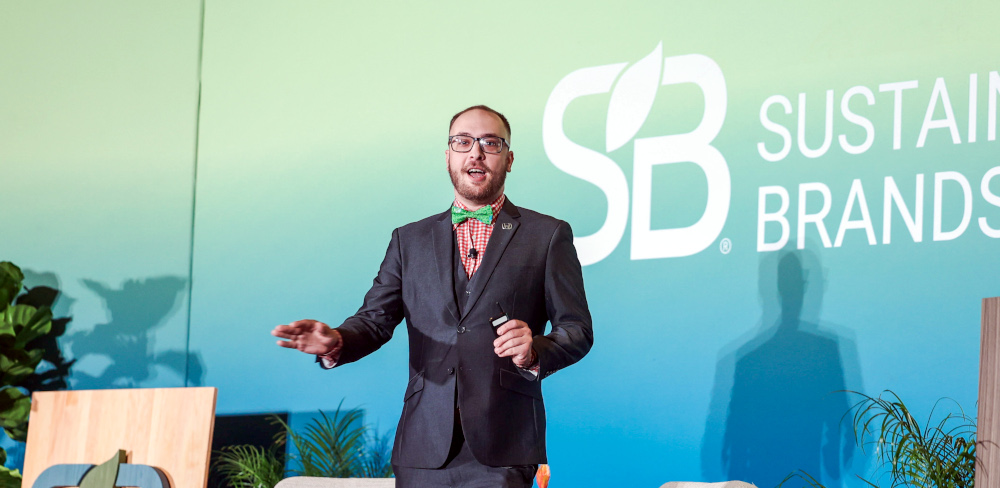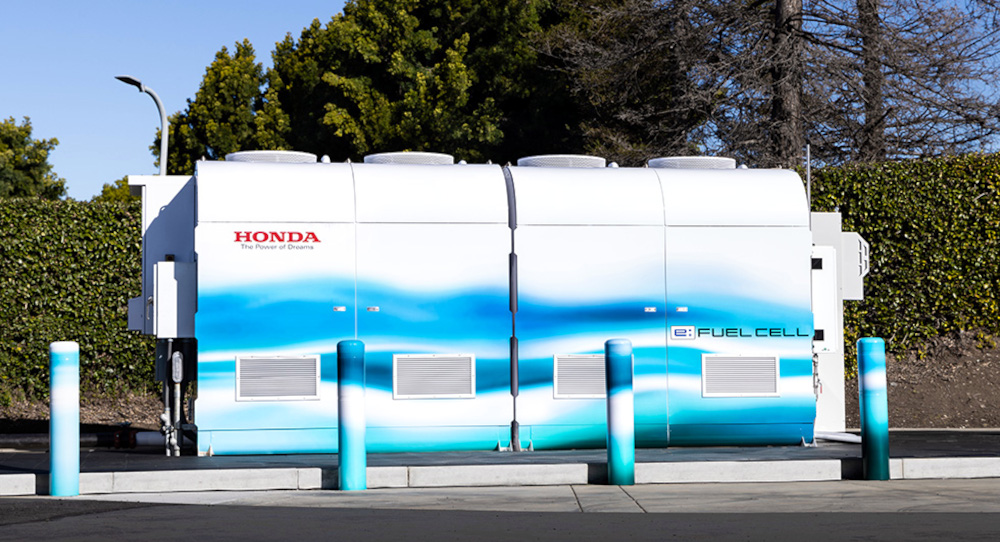It was incredible to experience the collaborative energy at SB’24 San
Diego.
Spending time in a community of innovative thinkers creating powerful change
within their organizations was both humbling and inspiring.
At Honda, our commitment to sustainability reflects
two challenging global goals we have set for the year 2050: to achieve zero
emissions for both our products and corporate activities, and zero traffic
fatalities from collisions involving Honda automobiles and motorcycles — even
older models.
While my plenary
speech
focused on our decarbonization journey, other members of Team Honda — Brian
Bautsch, our director of
North American Safety Strategy; and Alyssa
Barbuto, Environmental
Sustainability lead within our Supplier group — led a panel to share our wider
view of sustainability at Honda. We also offered all SB’24 attendees the
opportunity to drive two of our zero-emission vehicles — the 2024 Honda
Prologue and the 2025 Honda CR-V
e:FCEV fuel cell vehicle.
What became clear from the conversations during the week was that, despite the
outward differences of the industries, most of the conference participants
represent companies facing similar challenges when it comes to sustainability.
Whether in advancing new technologies or reimagining the core tenants of a
business, everyone is dealing with change — and collaboration will be essential
to our future success.
We are all in the midst of an epic challenge: How can we build a sustainable
future together? Honda in particular is in a once-in-a-hundred-years period of
transformation for the automotive industry. As the largest producer of internal
combustion engines in the world — with some 30 million engines per year powering
our cars, motorcycles, power equipment products and more — moving Honda toward
zero-carbon technologies represents a tectonic shift in our business.
However, such bold challenges are not new to Honda. In fact, as early as the
1970s, Honda became the first automaker to embrace the challenge to meet
stringent tailpipe emissions standards — powered by our engineers’ rallying cry
for “Blue Skies for our
Children.” The
reality is that the cars of the future won’t have tailpipes, which underscores
the need for Honda to adapt and transcend to fulfill our goal of being a company
that society wants to exist.
This led our global CEO, Toshihiro
Mibe, to call for the
"Second Founding of Honda" — marking a
bold return to the risk-taking spirit of our early days as a startup company, to
realize the future of mobility incorporating our dual goals for zero emissions
and zero fatalities.
While almost everyone is aware of the shift to electrification within the
automotive industry, what is less well known is the potential for renewable
energy
sources
to power other aspects of our operations. This level of decarbonization is
something that affects everyone; we cannot afford to try to do it alone.
 David Perzynski onstage at SB’24 San Diego | Image credit: Sustainable
Brands®
David Perzynski onstage at SB’24 San Diego | Image credit: Sustainable
Brands®
Our hydrogen story is symbolic of this direction. For almost 40 years, Honda has
been researching hydrogen technologies as an energy source. We have achieved
significant technical success, enabling us to introduce the first fuel cell
vehicles used by individual customers while learning a great deal. This year,
after several generations of FCEVs, we introduced the Honda CR-V e:FCEV. It’s
not only a great fuel cell electric vehicle — it’s the first one in the US to
incorporate plug-in hybrid technology.
During this period of transformation within Honda, we challenged ourselves to
see the bigger picture. We like how hydrogen complements investment into
renewable
energy,
how it has high energy density and can be excellent for decarbonizing
hard-to-electrify segments, and how the only output is simply
H2O.
How could we apply what we have learned about hydrogen to achieve
decarbonization for hard-to-electrify cases? To wean off diesel-powered products
with long use schedules and higher carbon emissions — namely commercial trucks,
construction equipment and stationary power stations?
Like most manufacturing companies that rely on the transport of parts to our
plants and then finished products to market, we face a notable challenge in
decarbonizing our logistics network. While some trucks can be electrified with
batteries, over-the-road rigs require a significant amount of electricity and
face long recharging times. In some areas, there isn’t enough capacity on the
grid to allow for such EV charging demand that an electrified truck fleet would
require.
We need an approach that would work for the 600 suppliers that deliver parts via
trucks to our manufacturing plants, to the rail lines that take our finished
vehicles to our network of dealers, and every single truck traveling between
these destinations. We found it with hydrogen. While we are not planning to
build Class 8 trucks ourselves, we do hope to inspire new and existing truck
manufacturers to enable their decarbonization plans by using Honda fuel
cells.
For applications where there are long duration backup needs, and for when there
are limitations on grid capacity — especially when there is not enough power for
EV charging — Honda believes strongly that fuel cells have a pathway to parity
with diesel cost of ownership.
 Honda’s stationary fuel cell power station in Torrance, CA | Image credit: Honda
Honda’s stationary fuel cell power station in Torrance, CA | Image credit: Honda
We face a similar challenge in decarbonizing our backup power portfolio, which
typically relies on diesel technology.
Resilience
and energy independence are crucial and often cannot be satisfied through
batteries or solar and wind power alone. We are already demonstrating a fuel
cell backup power source on our corporate campus in Torrance, California,
with plans to install similar systems at our other facilities and data centers
in North America.
During the Sustainable Brands conference, I spoke about how the Honda vision for
decarbonization aligns with my own dream. I grew up with asthma, and I sincerely
want my children to live in a world without diesel. Ultimately, as we grow our
new energy business, it is critical that we continue to leverage strategic
partnerships that will benefit customers and society— and uncover new areas to
fuel our mutual growth. Honda cannot create blue skies alone. Most every company
present at SB’24 has carbon-associated logistics, as well as for backup power —
and only by working together can we create clean solutions.
This is just the beginning. In the coming years, you will see us evolve in
exciting ways. Beyond fuel cell business, Honda will be creating tremendous
change through our investments in EV battery manufacturing, home automation,
bi-directional V2G charging and more.
Our founder, Soichiro Honda,
believed that the purpose of technology is to help people. Through our actions,
and through the collaborations we build together, we sincerely hope that the
power of our dreams for the future of mobility will move you. Please join us in
advancing these goals for the environment and safety.
Get the latest insights, trends, and innovations to help position yourself at the forefront of sustainable business leadership—delivered straight to your inbox.
Published Dec 9, 2024 8am EST / 5am PST / 1pm GMT / 2pm CET